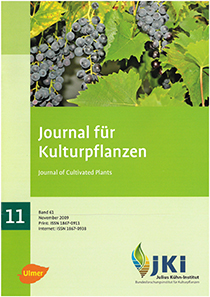New pest damaging apples and other woody plants in Germany: Pest Risk Assessment on Saperda candida
Keywords:
Plant health, Saperda candida, round-headed apple tree borer, pest risk assessment, PRA, apple trees, woody plants, damageAbstract
In July 2008 the round-headed apple tree borer, Saperda candida, occurred for the first time in Europe in Schleswig-Holstein on the island of Fehmarn in the districts Johannisberg and Mattiasfelde. In 2009 three dead and one living beetle were detected on a Crataegus in the infested area. The pathway has not yet been finally clarified, however, it is suspected that the introduction occurred in the course of the importation of infested apple trees from Northern America. This longhorn beetle species which especially affects apple trees, all relevant tree fruit species (Cydonia, Prunus, Pyrus) and also other woody plants like Amelanchier, Aronia, Cotoneaster, Crataegus and Sorbus, can cause dieback of single trees but also of complete apple tree plantings by the larvae boring galleries in the vessels and in the wood. The climatic conditions in Germany are comparable to those in the areas of origin of the pest (Eastern parts of Northern America and Canada). On Fehmarn the beetle has already reproduced. Since host plants are widely distributed throughout Germany and the round-headed apple tree borer also affects healthy trees the risk caused by S. candida is classified as high. In commercial apple growing as well as in private gardens, on roadside or landscape trees the damage caused by S. candida may be significant. Plant protection measures could be preventive and control measures, e. g. the use of fine-meshed nets, the destruction of infested plant material, the removal of wild host plants close to apple tree plantings, the painting of the stems with Latex/water-mixtures for preventing oviposition or the use of effective insecticides.
DOI: 10.5073/JfK.2009.11.04, https://doi.org/10.5073/JfK.2009.11.04








